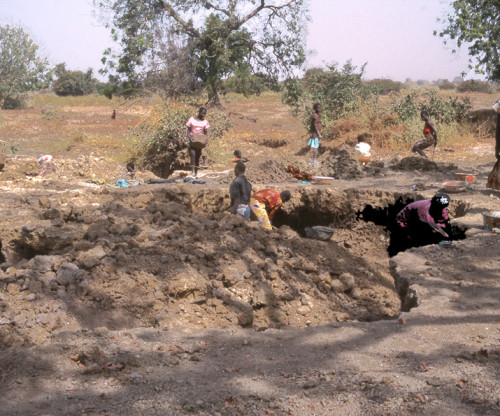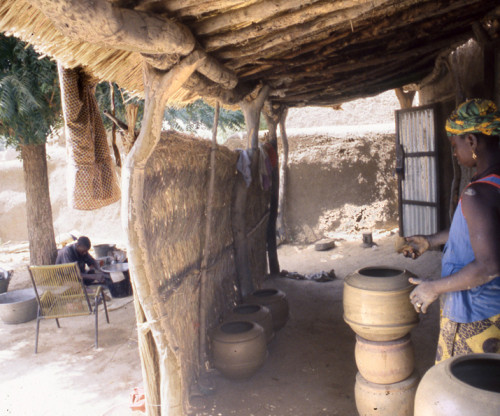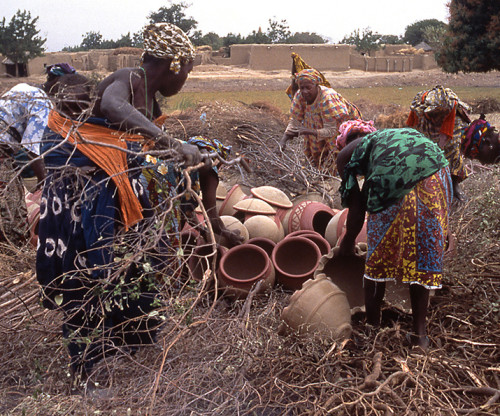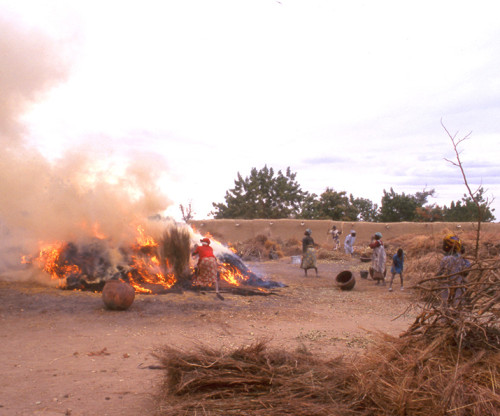Lecture
The potters of Kalabougou are major suppliers of pottery to the capital city, Bamako, 150 miles away as well as to Segou. Kalabougou is a village across the Niger River from Segou, Mali. The village dates from the time of the Bamana Empire which thrived in the region from the 17th –19th centuries. In 1994, Janet lived in Kalabougou for several months as part of her a Fulbright Fellowship. Because she was interested in working with women who make things, Janet spent my time getting to know the potters and their way of life, documenting it in video and still images.
I was first introduced into the village by a young man, the nephew of a friend, who had worked in Kalabougou for 45 days. He and I traveled from Bamako to Segou by bus. We traversed the river via pirogue and rode the 7 km to the village on a motor scooter.
We went directly to the house of the chief, Nama Koro. He wasn’t home. We talked to his wife and told her why we had come. All the time people were glad to see my guide and were greeting him fondly. We walked around the village while we waited. Then somehow my guide knew that Nama Koro had returned and we went to see him. My guide explained our mission to Nama Koro in Bamanankan. I gave Nama Koro the kola I had brought to give him at my guide’s nod that it was the proper time. He seemed pleased.
He said that since I wanted to work with the women, we would have to ask their permission. And we went to what I now know was Bôh’s compound. I was given the only chair. Four older women were assembled. They asked why I had come. The women asked my guide in Bamanankan and he asked me in French. I answered in French and he translated into Bamanankan. I said I wanted to come and work with the women in the village because I was interested in the pottery and their lives. I said I was an artist from America and wanted to exchange ideas and ways of life with them. And that I wanted to stay for about a month. But the amount of time was up to the two of us. The four women discussed my request for some minutes and I was told through the same chain of translation that it was in their culture to welcome strangers and that I was welcome to come. We discussed a couple of details of my visit. What would I eat? I said that I would like to help cook but I didn’t know their way of life so I would need some help and be happy to pay for that and my lodgings. We decided that the easiest way for me to get there was to return with all my stuff the following Monday -market day and ride the pirogue back to the village with the women.
We left the women and went back to Nama Koro’s compound where I had my first meal in the village- to, of course. I remember it was a green paste-y cake with a green leaf sauce and a red fish sauce. The national dish. I didn’t eat much. It was difficult to eat. I left in a kind of shock and wondering why I wanted to do this. I was glad to have just over a week to prepare myself for this adventure.










